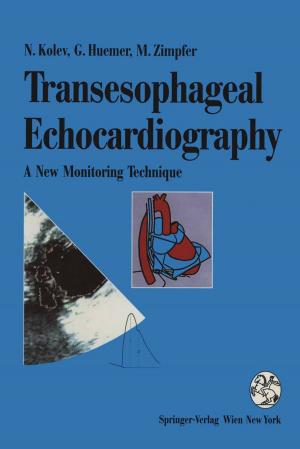Evolutionary Developmental Biology of Invertebrates 4
Ecdysozoa II: Crustacea
Nonfiction, Science & Nature, Science, Biological Sciences, Zoology| Author: | ISBN: | 9783709118535 | |
| Publisher: | Springer Vienna | Publication: | August 10, 2015 |
| Imprint: | Springer | Language: | English |
| Author: | |
| ISBN: | 9783709118535 |
| Publisher: | Springer Vienna |
| Publication: | August 10, 2015 |
| Imprint: | Springer |
| Language: | English |
This multi-author, six-volume work summarizes our current knowledge on the developmental biology of all major invertebrate animal phyla. The main aspects of cleavage, embryogenesis, organogenesis and gene expression are discussed in an evolutionary framework. Each chapter presents an in-depth yet concise overview of both classical and recent literature, supplemented by numerous color illustrations and micrographs of a given animal group. The largely taxon-based chapters are supplemented by essays on topical aspects relevant to modern-day EvoDevo research such as regeneration, embryos in the fossil record, homology in the age of genomics and the role of EvoDevo in the context of reconstructing evolutionary and phylogenetic scenarios. A list of open questions at the end of each chapter may serve as a source of inspiration for the next generation of EvoDevo scientists. Evolutionary Developmental Biology of Invertebrates is a must-have for any scientist, teacher or student interested in developmental and evolutionary biology as well as in general invertebrate zoology.
This second volume on ecdysozoans covers all animals commonly known as crustaceans. While “Crustacea” is currently not considered a monophylum, it still appears reasonable to combine its representatives in one joint volume due to their numerous shared morphological and developmental characteristics. Because of the huge variation in the amount of available developmental data between the various taxa, only the Dendrobranchiata, Astacida and Cirripedia are treated in individual chapters. The remaining data on crustacean development, usually incomplete and often patchy, is presented in two chapters summarizing early development and larval diversity, thereby also taking into account the data on fossil larval forms.
This multi-author, six-volume work summarizes our current knowledge on the developmental biology of all major invertebrate animal phyla. The main aspects of cleavage, embryogenesis, organogenesis and gene expression are discussed in an evolutionary framework. Each chapter presents an in-depth yet concise overview of both classical and recent literature, supplemented by numerous color illustrations and micrographs of a given animal group. The largely taxon-based chapters are supplemented by essays on topical aspects relevant to modern-day EvoDevo research such as regeneration, embryos in the fossil record, homology in the age of genomics and the role of EvoDevo in the context of reconstructing evolutionary and phylogenetic scenarios. A list of open questions at the end of each chapter may serve as a source of inspiration for the next generation of EvoDevo scientists. Evolutionary Developmental Biology of Invertebrates is a must-have for any scientist, teacher or student interested in developmental and evolutionary biology as well as in general invertebrate zoology.
This second volume on ecdysozoans covers all animals commonly known as crustaceans. While “Crustacea” is currently not considered a monophylum, it still appears reasonable to combine its representatives in one joint volume due to their numerous shared morphological and developmental characteristics. Because of the huge variation in the amount of available developmental data between the various taxa, only the Dendrobranchiata, Astacida and Cirripedia are treated in individual chapters. The remaining data on crustacean development, usually incomplete and often patchy, is presented in two chapters summarizing early development and larval diversity, thereby also taking into account the data on fossil larval forms.















